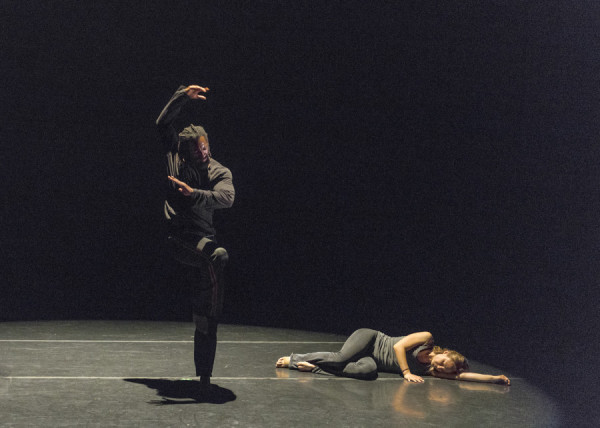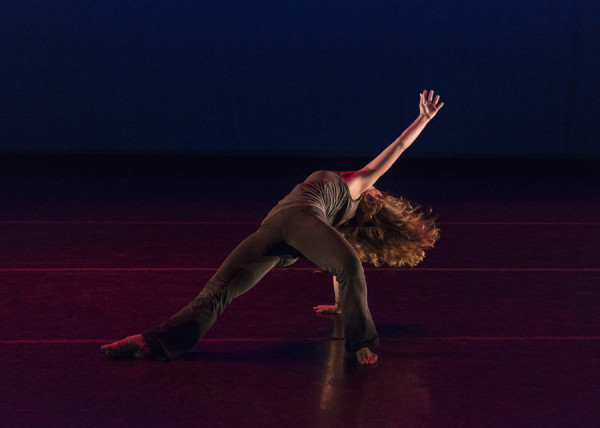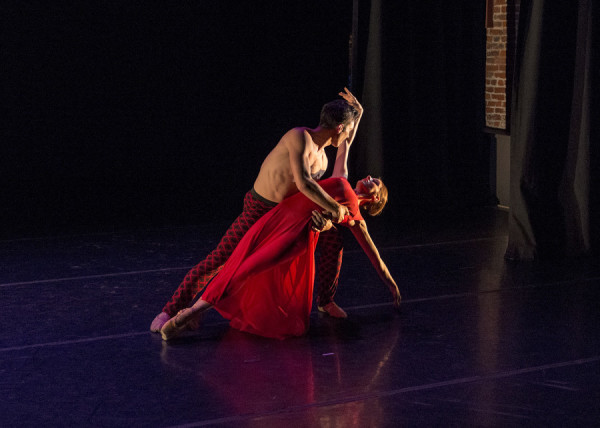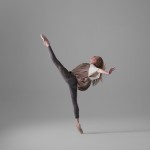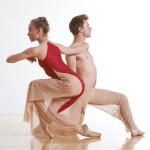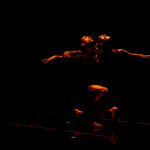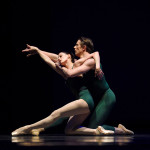Leigh Donlan reported from ODC Theatre, San Francisco:

Emily Kerr, Shaina Leibson, Rachel Speidel Little and Megan Terry in a piece by Milissa Payne Bradley (Photo: Jorge Alejandro Gomez)
On Sunday, ODC concluded their four-week Music Moves Festival with Theater Unplugged, a behind-the-scenes look at how dance is engineered. Two alumni from ODC’s choreographers’ Pilot Program, Antoine Hunter and Milissa Payne Bradley, were each given a new 40 hour residency to explore and evaluate their relationship to music when creating dances.
The post Q&A session was the most fascinating part of the program as the artists sat together, with their dancers and musicians, and discussed their processes in some depth. When asked how they chose their music, Payne Bradley cited her motivation to challenge herself while maintaining classical lines and modern sensibilities, while Hunter spoke of a spiritual method, of wanting to give his gift of dance to the audience, guided by voices above. Hunter is deaf and hard of hearing – no hearing in his left ear, very little in his right. Had he and Payne Bradley been given additional time and an opportunity to work closely together, I imagine they might have come up with something quite intriguing, given the differences in the way they work, and in what fuels their craft.
Hunter chose to choreograph before selecting his music, then responded to the music in the process of performing. He and two other deaf dancers, Zahna Moss and Samantha Braidi, danced three separate narrative vignettes and gave the most passionate performances of the evening. They held no reservation in their movements, which fused many styles including jazz, hip hop, African, breakdancing and modern. And the dances were as much about the dancers’ own personal journeys as about the choreographer’s vision. Hunter’s musical choices were jazz recordings of rich and diverse textures, including Maceo Parker’s “Children’s World,” Stanley Clark’s “Black on Black Crime” from Boyz N the Hood, and a selection from Richard Einhorn’s “Pieces of Light.”
Payne Bradley, usually one to create dances inspired by external forces like music, sought to find inspiration within herself and choreographed two pieces – one ballet, one contemporary. She then asked musician Daniel Berkman to compose for the contemporary piece, and Beth Garber to compose for the classical piece. And the musical results were beautiful. Berkman played the kora (a West African harp) and Garber played the Celtic harp, harmonizing with her voice. Payne Bradley used five dancers – Emily Kerr, Shaina Leibson, Rachel Speidel Little, Megan Terry and Gregory DeSantis – for the classical piece, which the women danced on pointe, and two for her contemporary piece – Elizabeth Randall and Joseph Copley – and all of them performed splendidly.
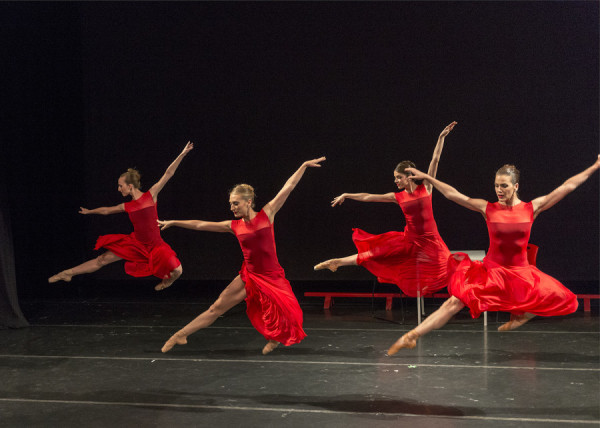
Emily Kerr, Shaina Leibson, Rachel Speidel Little and Megan Terry in a piece by Milissa Payne Bradley (Photo: Jorge Alejandro Gomez)
But it felt like both choreographers were working well within their comfort zones. The way they hear music may affect their process of dance making but their choreographic impulses did not seem to be greatly challenged by this experiment. Granted, the dances presented were very much works-in-progress, and they had very little time in which to create them. But had they collaborated with each other, or been assigned to work with the same piece of music, or choreograph for dancers with whom they were not already accustomed to working, their familiar relationships to music AND movement might have been disrupted, and the results may have surprised both them and us.

Joseph Copley and Elizabeth Randall in a piece by Milissa Payne Bradley (Photo: Jorge Alejandro Gomez)
While the intentions behind this program were admirable, the marketing was a little vague and misleading, and the execution was not uniformly exciting. The format probably needs to be thought through more carefully, with more attention given to the kinds of challenges presented to the artists, and more imagination in the presentation of these yet-to-be-refined pieces.

